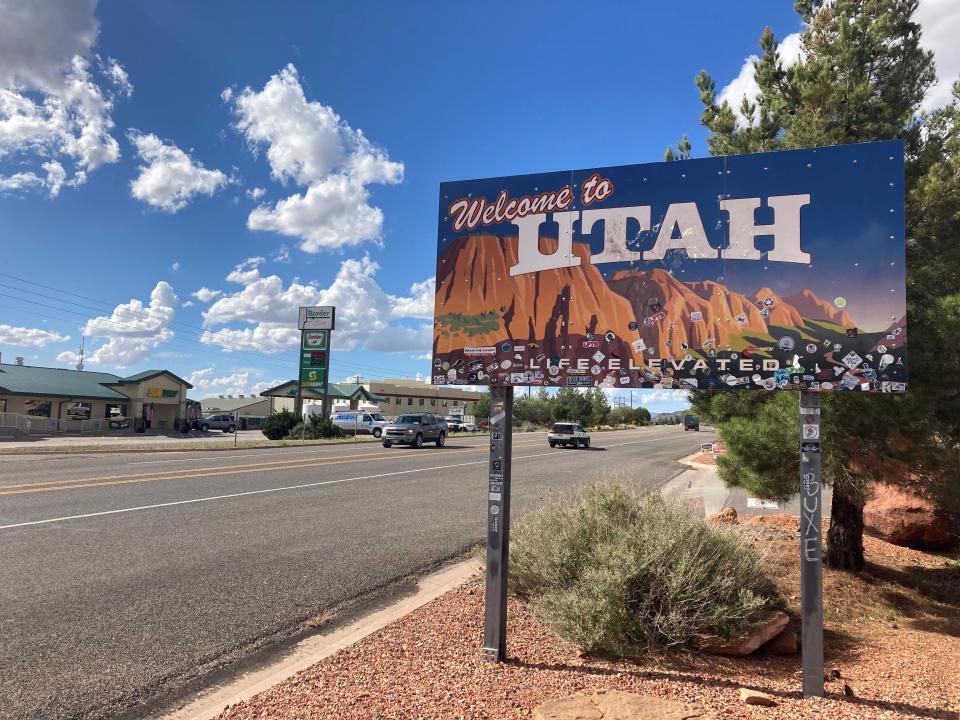St. George metro area population approaches 200,000, per new Census report

The St. George metro area is fast approaching the 200,000-population mark, according to the latest estimates from the U.S. Census Bureau.
And the neighboring Cedar City area just to the north was growing just as fast, jumping to more than 60,000.
The St. George Metropolitan Area, which consists of almost all of Washington County, had an estimated 197,680 residents as of the middle of 2022, according to the Census Bureau, having added an estimated 17,000 new people since the last official census in 2020. Since the 2010 census, the St. George area has grown more than 40%, according to the numbers.
The numbers suggest St. George is still among the fastest-growing metro areas in the U.S. So was Cedar City, which has grown more than 35% since 2010. Cedar City had added more than 5,000 new residents in the first two years of the decade.
Metropolitan statistical areas consist of one or more counties containing a central city with a population of at least 50,000 residents that together have a high degree of economic and social connections.

The estimates, based on migration statistics and the numbers of births and deaths in each area, count the population estimates from nearly a year prior, meaning the actual populations today could be significantly higher.
Thursday's data release doesn’t show the reasons behind population changes, but similar data at the county level released in March showed it was mostly driven by in-migration, meaning more people were moving into the area from elsewhere than were being born into the communities.
Future growth projections for St. George, Cedar City
Utah's long-term trends suggest the state will continue to grow its population, especially in the St. George and Cedar City areas, according to state demographers with the Kem C. Gardener Policy Institute at the University of Utah.
Washington and Iron counties are forecasted to see their populations double over the next 40 years.
If Washington County continues adding several thousand new residents every year, the numbers would quickly add up, with the population growing to a projected 464,528 in 2060.
The total number of households would grow from 62,416 to a projected 203,901, a forecast that matches the on-the-ground trends as new housing developments dot the landscape across the St. George and Hurricane areas.
Cedar City and the rest of Iron County are projected to grow to nearly 100,000 population, meaning it would look in 2065 much more like St. George and Washington County look today.
What is the population of Utah?

Utah had an estimated 3.4 million population as of the middle of 2022, according to the Kem C. Gardner Policy Institute.
The state grew by about 61,000 over the previous 12 months, meaning the state is growing at its fastest rate since the mid-2000s.
Most of the growth was from people moving into the state from elsewhere, according to the Institute's report. Of the estimated 61,242 new residents, 38,141 or 62% came from net migration.
What is the population of the U.S.?
As of May 2023, the U.S. Census Bureau estimates there are approximately 334 million people living in the country.
With a birth every nine seconds, a death every 11 seconds and an international migrant coming into the country every 32 seconds, the U.S. has a net gain of one person roughly every 19 seconds, according to the U.S. Census Bureau.
Which U.S. city has the largest population?
New York City has the largest population of any U.S. city. The city’s 8.8 million residents make the city more than twice as populous as the runner-up, Los Angeles, according to the Brookings Institute.Related image (ID: 7332276001)
What is the population density of the U.S.?
The U.S. had an overall population density of about 94 people per square mile in 2021, according to Statista.
However, population density can vary immensely throughout a country. In 2021, the state of Alaska had a population density of just over 1 person per square mile – but Washington D.C. had a population density of over 10,000 people per square mile, according to Statista.
What is the population growth rate of the U.S.?
The U.S. had a growth rate of 0.4% in 2022, according to the U.S. Census Bureau. This represents a significant rebound after historically low growth rates during the COVID-19 pandemic.
This article originally appeared on St. George Spectrum & Daily News: St. George area population approaches 200,000, per new Census report

